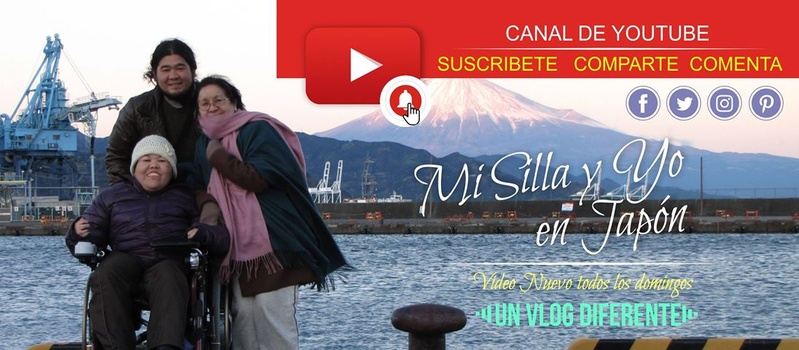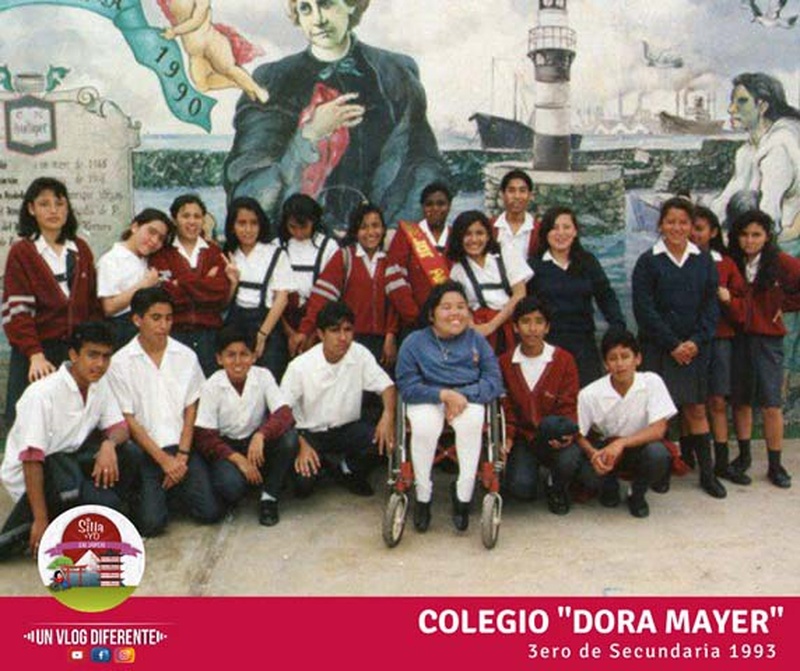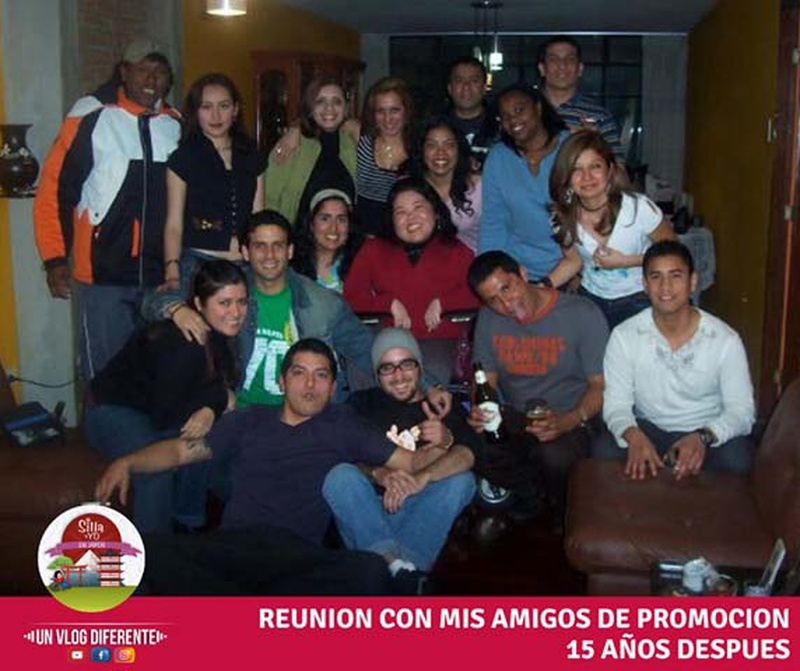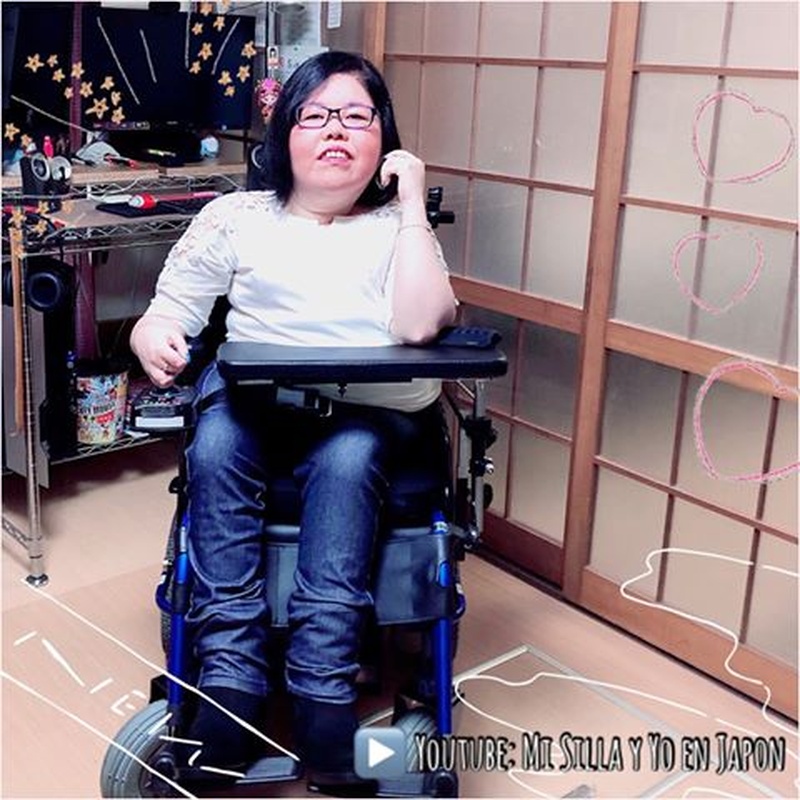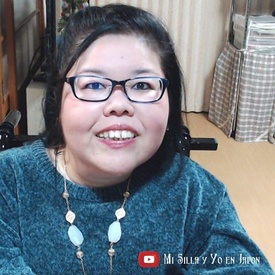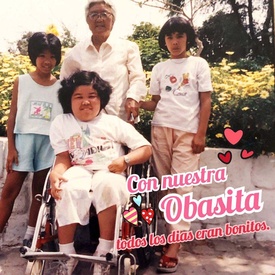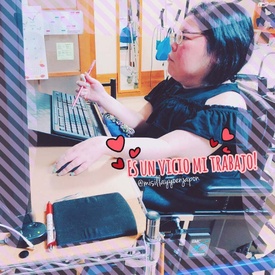Ángela Janet Teruya Rondón is a Nikkei Peruvian, who on her paternal side has Okinawan roots (Chatan-Cho). He came to Japan 11 years ago and currently lives in Shizuoka. For a year, Angie has been recording videos for YouTube about her daily life in Japan. But it was her medical condition that motivated her to record and she does it from her wheelchair, to share “the amazing things that Japan has for people with physical limitations.”
Shock in Japan: silence and lack of friends
Angie's brothers were the first to travel to Japan as dekasegi. Since Angie and her mother were left alone in Peru and that could be dangerous and unsafe for them, her brothers brought them to Japan. At first, Angie planned to stay only for a year and see how it went, but she changed her mind once she was already in Japan. He was able to adapt to the climate, although there were changes in his life. He left friends in Peru and had to create a job from scratch. But also, Angie had to face silence and the lack of friends. He criticizes the calm with which people live in Japan, which can attract a tourist, but stress and depress the resident. “You can't make everyday noise in your own apartment (apartment) after 9 p.m.,” she says. If before she used to be surrounded by friends, talk and go out a lot, now Angie notices how difficult it is to make friends in Japan, because the language barrier, because everyone is busy and because Japan has another way of building relationships, where kindness does not always mean trust and friendship.
Hoffmann syndrome, 1 case per 10,000 births
Angie was born with Hoffman Syndrome, a degenerative disease that weakens all the muscles in the body (including lungs and heart) until the body tires and dies. Against all odds, Angie exceeded the life expectancy that doctors gave her, first from 3 and then 15 years at most and he would always be sleeping. “I'm already 40 and, although I have some physical limitations that are more pronounced than before, I feel very good in general,” he says. Angie does not know another Nikkei in her city who has the same level of disability as her, which is the most severe (level 1).
Your motivation to be a Youtuber
When Angie talked about how different it is to live in Japan as a PWD (person with a disability), her friends in Peru listened in disbelief and fascinated. But in order not to keep such valuable information to herself, only available when you request it in Japan as a PCD, Angie decided to share it on a blog and then on YouTube. With the blog, Angie felt that words were too short for her and she became exhausted writing. But since her strong point is talking, she preferred YouTube more.
“My chair and I in Japan”
In My Chair and I in Japan , Angie shares everything she is discovering in Japan for PWD, such as transportation, social benefits, documentation, products, services, etc. But he also records everyday things, curiosities he sees in his city or some relevant news; all under the focus of a person with different needs. The name of the channel was born for 3 reasons, because “my chair is something that identifies me; She is my companion, with whom I can function as I want and where I want; and I think it is something that generates curiosity,” he explains.
A day as a youtuber
Angie records from her motorized chair. When he records at home, he uses the webcam and when it is outdoors, he uses the GoPro with the mount that his brother adapted to his chair or asks his mother for help to record with the iPhone. Her mother is the one who also helps her to change and comb her hair before recording or to set up the lights. But Angie prefers to record alone and in silence, although it is not easy to do it at home, because she is a boy like almost everyone in Japan, and that is why she takes advantage of the few moments she is left alone at home. Although editing a video can take up to a full day or her followers do not reach the amount she expected due to the type of information she shares, which is unique, useful and in Spanish; Angie will hardly leave YouTube.
Designer and entrepreneur
In addition to being a Youtuber, Angie is an advertising designer and administrator of Teruya Imports, her online business of imported products from Asia and Peru, where she herself designs the ads, manages the networks and takes orders. In addition, she works as a freelance designer for some companies. of Latinos and for October 2020, Angie already envisions a new project that will allow Hispanic entrepreneurs and companies in Japan to advertise effectively online.
The most “amazing” thing about Japan: health
After completing several procedures in Japan and going through medical check-ups, Angie received her disability card in about 4 months, which provides her with benefits in terms of health care. And it was also due to health issues that Angie decided to stay and live in Japan. Due to her congenital and degenerative disability, no company wanted to insure her in Peru. But in Japan, insurance, whether national or private, has the advantage of increasing discounts and care depending on the severity of your health condition. For example, Angie has special insurance in Japan that pays up to a maximum of 5,000 yen (about $50) per month, even if her expenses exceed that amount, and the municipality covers the rest. This covers monthly therapies and home care, medicines, operations and hospitalization. For example, for the two motorized chairs, the city paid about $12,800, which was the total amount, and for the orthopedic bed and shower chair, Angie only paid about $100, when it was actually $8,000. “As long as you pay your taxes in Japan, insurance is accessible to everyone, whether you are Japanese or not,” says Angie.
But in addition to the economic benefit, Angie highlights the constant assistance and concern. For example, Angie has a social worker who visits her 3 times a year and is the one who suggests what she should request from the municipality and who does all the paperwork. “When I needed a new chair, the assistant recommended that I also ask for an orthopedic bed and extra help to ease the burden on my mother, who is the one who cares for me; Although inside I was afraid that they would reduce my help for asking for so many things at the same time. But the assistant, rather, encouraged me to ask for all the necessary help.” Angie lives in a housing complex or danchi of the municipality, where her apartment is adapted for a wheelchair, with access ramps, a large bathroom and no tatami floor. If she needs to go to a doctor, Angie just needs to contact her social worker, who is in charge of locating one with special facilities for PCD and making an appointment. These are some examples of what Angie is discovering in Japan for PWD and that she shares on her YouTube channel.
But what does stand out about Peru is the attitude of the PWD. According to Angie, Peruvian PWDs have an almost normal life, where they go out to study, work and therefore socialize more, "surely because nothing is easy and even less so, it is free in Peru." In contrast, Japanese PWD are more sedentary, self-conscious and isolated; because in Japan they have social and medical assistance and “they don't have that need to earn a living.” It is very common to see Japanese PWDs in pajamas on the street, wheelchair taxis that operate until 5 pm (because they assume that after that time, no PWD is out of the house) or that the last opening hours of the personal assistant be 8 pm (because they assume that a PWD has to sleep at that time).
The efforts that Japan makes to improve the quality of life of PWD or people with disabilities and respect their dignity as people can inspire those of us who live in a different reality. And for that reason, Angie has a lot to tell and show on her YouTube channel.
Fact:
My chair and I in Japan : YouTube / Facebook
* Article adapted for Discover Nikkei and originally published in the Peru Shimpo newspaper on December 8, 2019.
© 2019 Milagros Tsukayama Shinzato / Peru Shimpo


